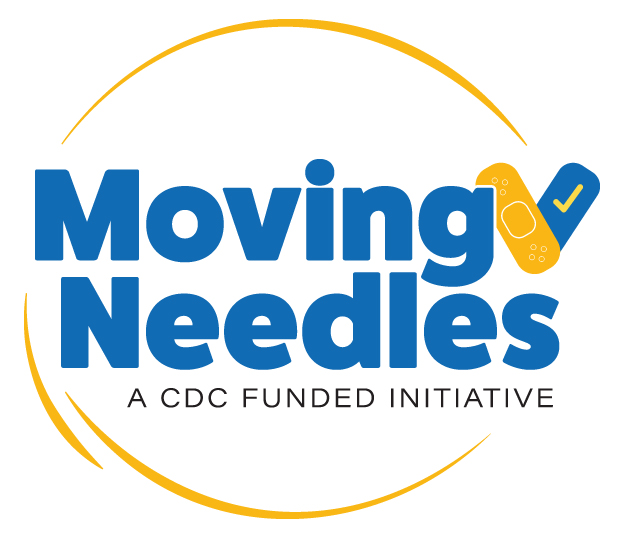Objectives To examine the associations between COVID-19 pandemic waves (1–4) and prevalent antipsychotic, antidepressant, benzodiazepine, anticonvulsant, and opioid use among assisted living (AL) residents, by setting (dementia care vs other). Design Population-based, repeated cross-sectional study. Setting and Participants Linked clinical and health administrative databases for residents of all publicly subsidized AL homes (N = 256) […]
Journal of the American Medical Directors Association
Clinical Comorbidities and Transitions Between Care Settings Among Residents of Assisted Living Facilities: A Repeated Cross-Sectional Study
Clinical Comorbidities and Transitions Between Care Settings Among Residents of Assisted Living Facilities: A Repeated Cross-Sectional Study
Objective We investigate the changes in the sociodemographic characteristics, clinical comorbidities, and transitions between care settings among residents of assisted living facilities. Design Repeated cross-sectional study. Setting and Participants Linked, individual-level health system administrative data on residents of assisted living facilities in Ontario, Canada, from January 1, 2013, to December 31, 2019. Methods Counts and […]
“I Have a Lotta Sad Feelin'” – Unaddressed Mental Health Needs and Self-Support Strategies in Medicaid-Funded Assisted Living
“I Have a Lotta Sad Feelin'” – Unaddressed Mental Health Needs and Self-Support Strategies in Medicaid-Funded Assisted Living
Objective To investigate mental health needs and barriers to seeking mental health support in Medicaid funded Assisted Living Facility (M-ALF). Design A multimethod, qualitative-dominant descriptive design using questionnaires and semistructured interviews. Setting and Participants The study occurred at a M-ALF in the Bronx, New York. A researcher in residence recruited 13 residents (11 Black or […]
Hospital Proximity and Emergency Department Use among Assisted Living Residents
Hospital Proximity and Emergency Department Use among Assisted Living Residents
Objectives To examine the relationship between AL communities’ distance to the nearest hospital and residents’ rates of emergency department (ED) use. We hypothesize that when access to an ED is more convenient, as measured by a shorter distance, assisted living (AL)-to-ED transfers are more common, particularly for nonemergent conditions. Design Retrospective cohort study, where the […]
Pathways into Assisted Living Communities: Admission Limitations and Assessment Requirements Across the United States
Pathways into Assisted Living Communities: Admission Limitations and Assessment Requirements Across the United States
Objectives Limitations to admission play a critical role in shaping the composition of residents residing within licensed assisted living (AL) communities. Design We document variation across 165 licensure classifications in how state agencies limit who AL communities may admit and what assessments are required to make those determinations. Setting and Participants AL regulations and licensed […]
Online Customer Reviews of Assisted Living Communities: Association with Community, County, and State Factors
Online Customer Reviews of Assisted Living Communities: Association with Community, County, and State Factors
Objectives Online reviews provided by users of assisted living communities may offer a unique source of heretofore unexamined data. We explored online reviews as a possible source of information about these communities and examined the association between the reviews and aspects of state regulations, while controlling for assisted living, county, and state market-level factors. Design […]
End-of-Life Care Transitions in Assisted Living: Associations With State Staffing and Training Regulations
End-of-Life Care Transitions in Assisted Living: Associations With State Staffing and Training Regulations
Objectives We examined the frequency and categories of end-of-life care transitions among assisted living community decedents and their associations with state staffing and training regulations. Design Cohort study. Setting and Participants Medicare beneficiaries who resided in assisted living facilities and had validated death dates in 2018-2019 (N = 113,662). Methods We used Medicare claims and assessment […]
Identifying a National Cohort of Medicare Beneficiaries Residing in Assisted Living Settings: An Updated Method
Identifying a National Cohort of Medicare Beneficiaries Residing in Assisted Living Settings: An Updated Method
WHAT THIS MEANS FOR YOU: A new methodology was developed for identifying Medicare beneficiaries residing in licensed AL communities in the US using zip code data, Medicare enrollment data, and claims data, and exclusion based on AL capacity (licensing information). Results suggested that using licensing information makes identifying AL residents receiving Medicare more accurate, which could inform research and policy by providing new insights into the health of AL residents.
Primary Care Telemedicine Use among Assisted Living Residents with Dementia during COVID-19: Race and Dual Enrollment Status
Primary Care Telemedicine Use among Assisted Living Residents with Dementia during COVID-19: Race and Dual Enrollment Status
WHAT THIS MEANS FOR YOU: This study used Medicare and CDC datasets to examine telemedicine primary care among 62,000 AL residents with dementia during the first year of the COVID-19 pandemic (2020). During the first three quarters of the pandemic, racially minoritized groups (Black, Hispanic) and Medicare-Medicaid dual eligibles were able to successfully use telemedicine at high rates. Gaps in primary care access between these groups and others (white, non-Medicaid eligible) were reduced due to telemedicine. This could inform CMS decisions about Medicare coverage for telemedicine primary care.
State Variation in Antipsychotic Use Among Assisted Living Residents With Dementia
State Variation in Antipsychotic Use Among Assisted Living Residents With Dementia
WHAT THIS MEANS FOR YOU: This study of almost 21,000 AL residents in 2017 revealed that those with dementia were prescribed antipsychotics during about 13% of their time residing in AL. This proportion varied by state, with Hawaii having the lowest prescription rate (8%), and Wyoming having the highest (21%). Variations may be due to state regulation of AL communities, but the study was not able to determine if prescription practices were appropriate and tied to health outcomes.
Using Medicare Enrollment Data to Identify Beneficiaries in Assisted Living
Using Medicare Enrollment Data to Identify Beneficiaries in Assisted Living
WHAT THIS MEANS FOR YOU: Because AL is state-regulated, obtaining information about Medicare beneficiaries in AL can be difficult. This study identified AL Medicare beneficiaries using zip code files, Medicare databases, and other data sets, which can aid researchers and policymakers.
Patient Safety Culture in Assisted Living: Staff Perceptions and Association with State Regulations
Patient Safety Culture in Assisted Living: Staff Perceptions and Association with State Regulations
ObjectivesTo examine perceptions of patient safety culture (PSC) among assisted living (AL) administrators and direct care workers (DCWs), and their associations with state regulations. DesignWe conducted a survey using the PSC instrument developed by the Agency for Healthcare Research & Quality. Secondary data on ALs and residents were derived from the Medicare Master Beneficiary Summary […]
Coping Behaviors and Health Status during the COVID-19 Pandemic among Caregivers of Assisted Living Residents in Western Canada
Coping Behaviors and Health Status during the COVID-19 Pandemic among Caregivers of Assisted Living Residents in Western Canada
Objectives To examine the prevalence of coping behaviors during the first 2 waves of the COVID-19 pandemic among caregivers of assisted living residents and variation in these behaviors by caregiver gender and mental health. Design Cross-sectional and longitudinal survey. Setting and Participants Family/friend caregivers of assisted living residents in Alberta and British Columbia. Methods A […]
Excess Mortality Among Assisted Living Residents with Dementia during the COVID-19 Pandemic
Excess Mortality Among Assisted Living Residents with Dementia during the COVID-19 Pandemic
Objective To evaluate whether assisted living (AL) residents with Alzheimer’s disease and related dementias (ADRD) experienced a greater rate of excess all-cause mortality during the first several months of the COVID-19 pandemic compared to residents without ADRD, and to compare excess all-cause mortality rates in memory care vs general AL among residents with ADRD. Design […]
Staff Attitudes Related to Antipsychotic Prescribing in Assisted Living
Staff Attitudes Related to Antipsychotic Prescribing in Assisted Living
Assisted living (AL) provides the majority of residential long-term care in the United States. Almost 40% of AL residents display behaviors such as aggression and refusing care, 57% of whom receive medications for these behaviors. In nursing homes, concerns about inappropriate antipsychotic prescribing led to initiatives to reduce prescribing, and although there has been concern […]
State Regulations and Hospice Utilization in Assisted Living during the Last Month of Life
State Regulations and Hospice Utilization in Assisted Living during the Last Month of Life
Objectives: To examine the association between hospice/staffing regulations in residential care or assisted living (RC/AL) and hospice utilization among a national cohort of Medicare decedents residing in RC/AL at least 1 day during the last month of life, and to describe patterns of hospice utilization. Design: Retrospective cohort study of fee-for-service Medicare beneficiaries who died […]
Antibiotic Deescalation Opportunities for Residents in Assisted Living Facilities
Antibiotic Deescalation Opportunities for Residents in Assisted Living Facilities
Antibiotic prescribing patterns offer insights into clinical care across different health care settings, especially in nursing homes (NHs). These residents are highly susceptible to infection and are frequently inappropriately treated with antibiotics. Overuse and misuse of antibiotics is a common cause of adverse drug events, colonization, and infections caused by multidrug-resistant bacteria and Clostridioides difficile […]
As-Needed Prescribing and Administration of Psychotropic Medications in Assisted Living: A 7-State Study
As-Needed Prescribing and Administration of Psychotropic Medications in Assisted Living: A 7-State Study
Objectives Psychotropic medications administered on an as-needed basis, often designated as pro re nata (or PRN, hereafter as-needed), can alleviate acute symptoms and facilitate deprescribing, although as-needed use is associated with negative outcomes such as polypharmacy and drug interactions. The aim of this study was to examine the extent to which PRN psychotropic medications are […]
Melatonin Prescribing in Assisted Living
Melatonin Prescribing in Assisted Living
Objectives: Aging is associated with sleep problems, which are common among assisted living (AL) residents. More than 40% of residents have insomnia, and almost 70% have a sleep disturbance of some kind. Melatonin to treat sleep disorders has become common among older adults, but its use in AL is unknown, which is concerning because melatonin […]
Administrator Turnover in Oregon Assisted Living and Residential Care Communities, March 2020–February 2021
No abstract available.
Monitoring Laboratory Parameters for Drug Toxicity in Assisted Living Facilities
Monitoring Laboratory Parameters for Drug Toxicity in Assisted Living Facilities
No abstract available.
COVID-19 in Assisted Living: Protecting a Critical Long-Term Care Resource
COVID-19 in Assisted Living: Protecting a Critical Long-Term Care Resource
The COVID-19 pandemic had a big impact on assisted living (AL), a vital setting in long-term care (LTC). Understanding the strengths and opportunities for improvement through practice, policy, and research are essential for AL to be prepared for the next pandemic and other challenges. AL communities experienced the pandemic in unique ways, because of varying […]
Reimagining Medical Care in Assisted Living
Reimagining Medical Care in Assisted Living
WHAT THIS MEANS FOR YOU: Three industry-wide proposals were recommended to enhance medical care quality for AL residents: regular on-site medical visits; employing experienced professionals in long-term and end-of-life care; and the introduction of an AL medical director role to establish rules, staff qualifications, and collaboration. The researchers acknowledge that adaptations may be necessary to adhere to these recommendations due to community size and availability of resources.
Implementing Large-Scale Data-Driven Quality Improvement in Assisted Living
Implementing Large-Scale Data-Driven Quality Improvement in Assisted Living
Objectives Develop and evaluate the implementation of a proposed model for large-scale data-driven quality improvement in assisted living. Design We conducted a mixed-methods evaluation of the implementation of a large-scale data-driven quality improvement collaborative of Wisconsin assisted living communities (ALCs). Setting and Participants The model has been voluntarily implemented by 810 Wisconsin-licensed ALCs serving >20,000 […]


